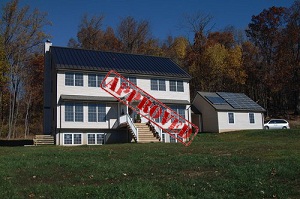DOE’s SunShot Initiative offers $27 million to reduce soft costs of solar
 Photovoltaic module prices have come down over the past few years, so have the costs of installing solar for homeowners and small businesses. But as these costs have fallen, the so-called soft costs of installing solar, which include permitting, coding, legal and regulatory costs, have remained stagnant.
Photovoltaic module prices have come down over the past few years, so have the costs of installing solar for homeowners and small businesses. But as these costs have fallen, the so-called soft costs of installing solar, which include permitting, coding, legal and regulatory costs, have remained stagnant.
To address the issues, the Department of Energy is offering up to $27 million to help streamline the process.
“The ‘soft costs’ involved in solar energy can account for 40 percent of the total cost of a solar energy installation. We expect that by the end of the decade, we’ll be able to reduce the soft costs of solar energy by more than half,” said DOE spokesperson Jen Stutsman. “The transformational efforts being pursued through the Rooftop Solar Challenge, the Sanders legislation, and other DOE solar programs are all developed to achieve these cost reductions, enable the widespread deployment of solar energy, and save time and money for local governments to permit solar energy systems.”
The June 1 announcement of the funding opportunities included up to $12.5 million under the Rooftop Solar Challenge and up to $15 million over three years to support Balance of System Cost reductions.
The announcement follows legislation introduced last Friday, the 10 Million Solar Roofs Act of 2011, which also aims to reduce the soft costs of solar. That legislation was introduced by Senators Bernie Sanders (I-Vt.), John Boozman (R-Ark.) and Jeff Bingaman (D-N.M.).
The legislation was developed independently of the SunShot Initiative, but with the program in mind.
“They’re very much related. We talked with DOE as they ramped up the SunShot Initiative,” said Darren Springer, Sanders’ Legislative Assistant for Energy and Environment.
The bill also came shortly after Sanders’ home state of Vermont eliminated permitting for small-scale solar installations—exactly what’s now being looked at, at the federal level.
“It really makes Vermont kind of a model for small installations on homes. You can register the system, then the state utilities can raise any concerns within 10 days,” he said. “The introduction of the bill was timed just right to go with these two.”
“The two current funding opportunities were designed to be complementary,” Stutsman said. “The Rooftop Solar Challenge is ‘action oriented’—aimed at driving real change in how the permitting and interconnection processes are implemented by local governments and utilities, while the Balance of System Costs funding opportunity is geared toward developing IT solutions, databases, trainings and other tools to be utilized by local and state governments, utilities, industry, Challenge participants and others to enable the streamlining and standardization of these processes.”
The Rooftop Solar Challenge seeks to establish consistency in the processes used to implement codes, and to standardize processes across the largest possible areas, according to Stutsman.
“This could be large metropolitan regions within a state, statewide, or across multi-state regions,” she said. “Greater standardization and an increase in consistency are imperative for driving down the costs associated with rooftop solar installations.”
Photo Illustration: Chris Meehan / CleanEnergyAuthority.



